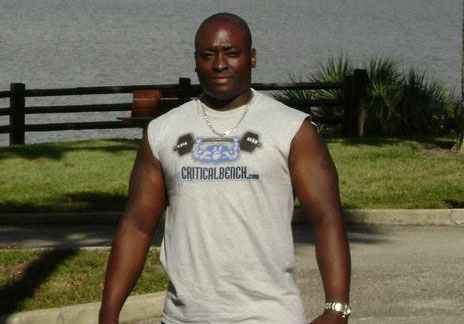For a lot of bodybuilders, competitive athletes and guys who just like to work out, sore muscles are the marker for a "good" workout. If you're muscles aren't sore the next day or the day after that, then you probably didn't work out hard enough-that's what a lot of us have been taught to believe, anyway. But is that really true? Is it necessary for us to train hard enough so that every time we work out our muscles are sore? Let's find out.
For years, fitness and medical experts thought that sore muscles were the result of lactic acid building up after an intense training sessions. Lactic acid is produced when you exercise or lift really intensely-when the muscles are screaming for more oxygen than what the blood can possibly deliver at that moment. Because the body can't deliver the oxygen the muscles want, it compensates by beginning another process-one that works in the absence of oxygen. Lactic acid is a by-product of this process. And since it is an acid, it causes us to "feel the burn."
So while on the surface it seems to make sense that lactic acid could be the culprit in causing sore muscles after an intense training session, it's just not so. In reality, the lactic acid gets washed away from the muscles pretty quickly-it doesn't hang around for hours or days. But, the muscle soreness we're talking about here doesn't show up for anywhere from as little as 8 to up to 36 hours after we train. So if can't be lactic acid causing the soreness, what is it?
Modern science points to micro-traumas…
..as the real perpetrator that causes the post-training muscle soreness. Micro-traumas are just what they sound like: small abrasions, tears or otherwise localized damage to muscle fibers-specifically, the membranes and contractile elements. Researchers have taken biopsies of muscles suffering from training-induced micro-traumas discovering that the z-bands were bleeding, causing their function to be disrupted.
The z-bands are filaments that hold the muscle fibers together as they slide over one another while contracting. When they're damaged and bleeding-even though it's microscopic-the muscle fibers become swollen and of course, sore.
They've even found a way to evaluate just how badly the muscles have been damaged by measuring the level of creatine phosphokinase (CPK) in the bloodstream. CPK is normally found inside of the muscle fibers but the when the fibers are damaged the CPK is released into the bloodstream. The higher the level of CPK in the bloodstream, the greater the damage to the muscles, which means more soreness.
Some people say that stretching after you train can alleviate the severity of Delayed Onset Muscle Soreness (DOMS)-which is what it's being called these days. However, knowing what we now know about what causes the soreness, we realize that this just isn't true. While stretching-before and after a workout-is always a good idea, it won't do much of anything to reduce or eliminate sore muscles the following day because micro-traumas are the real source of the pain, not lactic acid.
So is muscle soreness necessary? The answer is that to some degree yes, it is needed. It's the stress or trauma that comes from lifting hard and heavy that causes our muscles to grow and become stronger. If you never train to the point where your muscles are sore the next day then the truth is, you're not training hard enough-and you're not seeing the results you'd probably like to see. On the other hand, ignoring the soreness and forging blindly ahead training "through the pain" is not the answer either. If you don't pay attention to what your body is saying, you'll pay the price sooner or later and wind up injuring yourself-possibly very seriously.
The secret to managing the soreness is two-fold:
1) increase your workload gradually. Don't try and show off by making huge leaps in the amount of weight you're lifting-give your muscles time to adapt. 2
) Allow your body plenty of time to rest and recover between training sessions. Remember, the rest and recovery part of bodybuilding is equally as important as the lifting weights part. It's during this process that you're muscles are actually growing-not when you're working out.
So while it shouldn't really be your goal to completely eliminate training-induced muscle soreness it is important to know that you can manage it and minimize its impact on your body and your training routine.
More Information About Muscle Building Click Here
Source 4 Foods Never To Eat

No comments:
Post a Comment